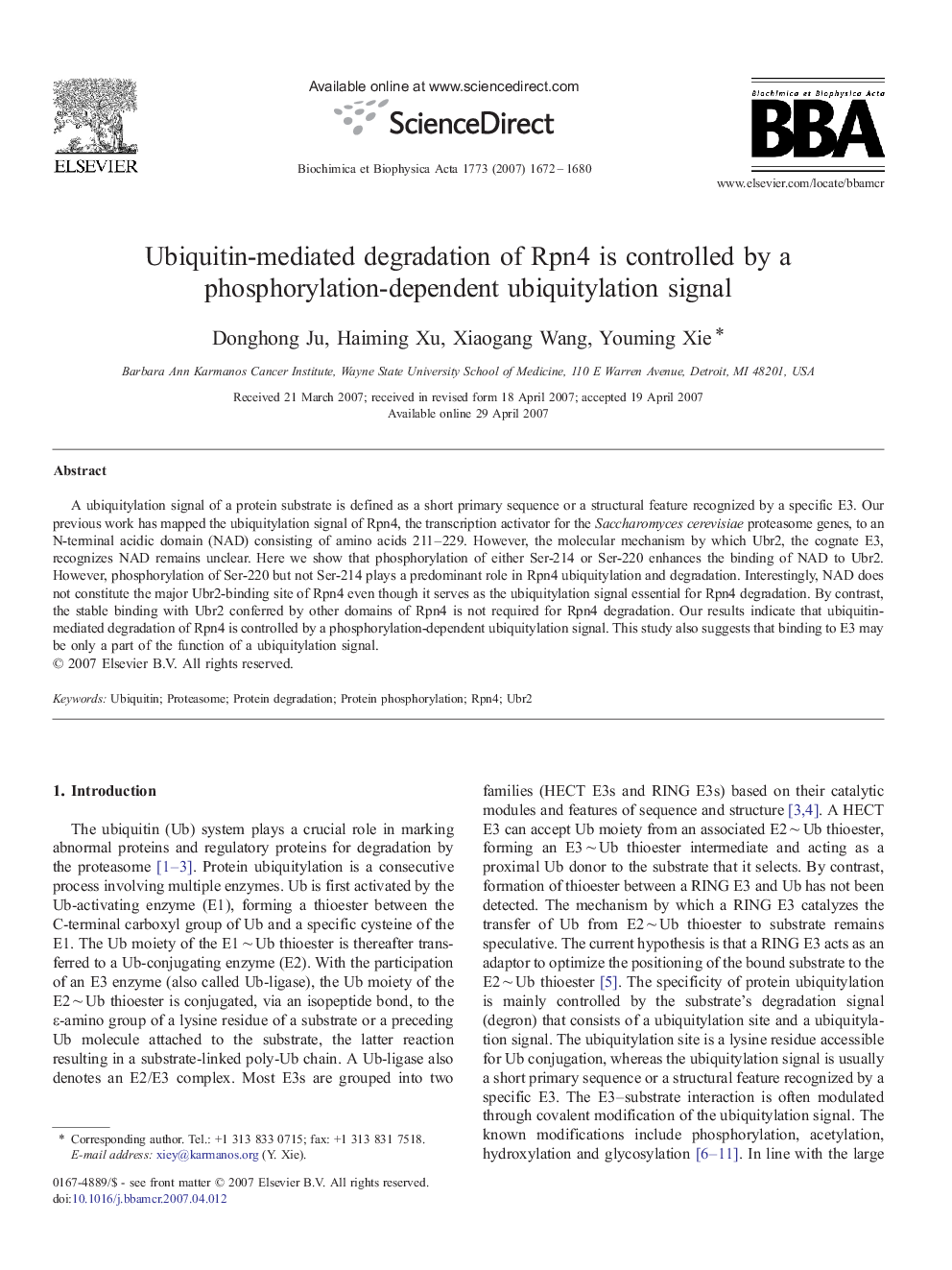| Article ID | Journal | Published Year | Pages | File Type |
|---|---|---|---|---|
| 1951576 | Biochimica et Biophysica Acta (BBA) - Molecular Cell Research | 2007 | 9 Pages |
A ubiquitylation signal of a protein substrate is defined as a short primary sequence or a structural feature recognized by a specific E3. Our previous work has mapped the ubiquitylation signal of Rpn4, the transcription activator for the Saccharomyces cerevisiae proteasome genes, to an N-terminal acidic domain (NAD) consisting of amino acids 211–229. However, the molecular mechanism by which Ubr2, the cognate E3, recognizes NAD remains unclear. Here we show that phosphorylation of either Ser-214 or Ser-220 enhances the binding of NAD to Ubr2. However, phosphorylation of Ser-220 but not Ser-214 plays a predominant role in Rpn4 ubiquitylation and degradation. Interestingly, NAD does not constitute the major Ubr2-binding site of Rpn4 even though it serves as the ubiquitylation signal essential for Rpn4 degradation. By contrast, the stable binding with Ubr2 conferred by other domains of Rpn4 is not required for Rpn4 degradation. Our results indicate that ubiquitin-mediated degradation of Rpn4 is controlled by a phosphorylation-dependent ubiquitylation signal. This study also suggests that binding to E3 may be only a part of the function of a ubiquitylation signal.
